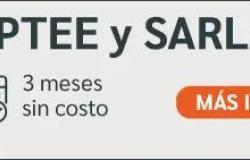Tuesday 11.6.2024
/
Last update 19:07
San Nicolás de los Arroyos, in the province of Buenos Aires, became the first Argentine town to implement the voucher system, also known as Municipal Medical Insurance, which allows residents without medical coverage to access both public health institutions and to private centers that have established an agreement with the municipality. This is the modality that La Libertad Avanza promoted during the presidential campaign. The initiative, its advocates argue, seeks not only to relieve pressure on the public health system, but also to provide options for citizens to choose the type of care they prefer.
The official presentation took place at the GO Sanatorio San Nicolás. The event was attended by the national Minister of Health, Mario Russo, the Secretary General of the Presidency, Karina Milei, and the President of the Chamber of Deputies, Martín Menem.
How does this system work?
The official statement specifies that the voucher mechanism or Municipal Medical Insurance is implemented through a digital credential that records all medical visits made by the person. The user uses their DNI as a member number for the Municipal Medical Insurance, in order to have control of the care received to avoid fraud.
Like social and prepaid works, it works with a token key, which is obtained through the municipal website. “It allows access to basic medical services such as: clinical, pediatric, obstetric, and gynecological consultations, and vaccination, both in the public and private systems,” according to its promoters.
See also
See also
Will radiologists survive the artificial intelligence revolution?
The financing of this system falls on the municipality, which pays the private centers for each service provided. To determine costs, the tariffs of the Provincial Autárquico Institute of Social Work (Iapos) of Santa Fe are used. However, it is important to highlight that this system only covers primary health care and not long-term or highly complex treatments.
The official presentation took place at the GO Sanatorio San Nicolás.
The implementation involves mainly administrative and financial changes, does not require the user to carry out additional procedures and is designed for hospitalizations, for the moment, of up to 12 hours. The Secretary of Health of San Nicolás explained: “The voucher is to be able to receive care in the private system if the patient wants. If you choose to continue serving in the public, you only show up with your DNI. “What we seek is to build an integrated public-private system and improve accessibility and equity,” in statements to the Buenos Aires newspaper La Nación.
See also
See also
The challenge of treating rare diseases and what practices have worked in the world
In turn, the official described the process: “If a boy arrives at the ward or at an outpatient clinic of the sanatorium due to bronchospasm, he is assisted, an x-ray is done, which is a practice that is included in first-level care. , and treatment is given. He may need a brief hospitalization, of three or four hours, temporarily or, if he improves, he continues treatment in the outpatient clinic with the indicated controls. If he requires more complex care, he is referred to a second level of care, which is hospital, and can be public or private. This hospitalization is not covered by the voucher, but by the public system through the patient’s ID.”
In San Nicolás, in the north of the province of Buenos Aires, 175,000 people live, of which 50,000 do not have medical coverage, which represents 30% of the population. Mayor Santiago Passaglia, of Together for Change, specified that since the implementation of the voucher system in January, more than 5,000 consultations have been administered, which, according to the president, shows a positive response from the community. “Patients go from having the experience of receiving care in the public center to doing so, if they wish, in a center just like a patient with coverage,” added Passaglia.






